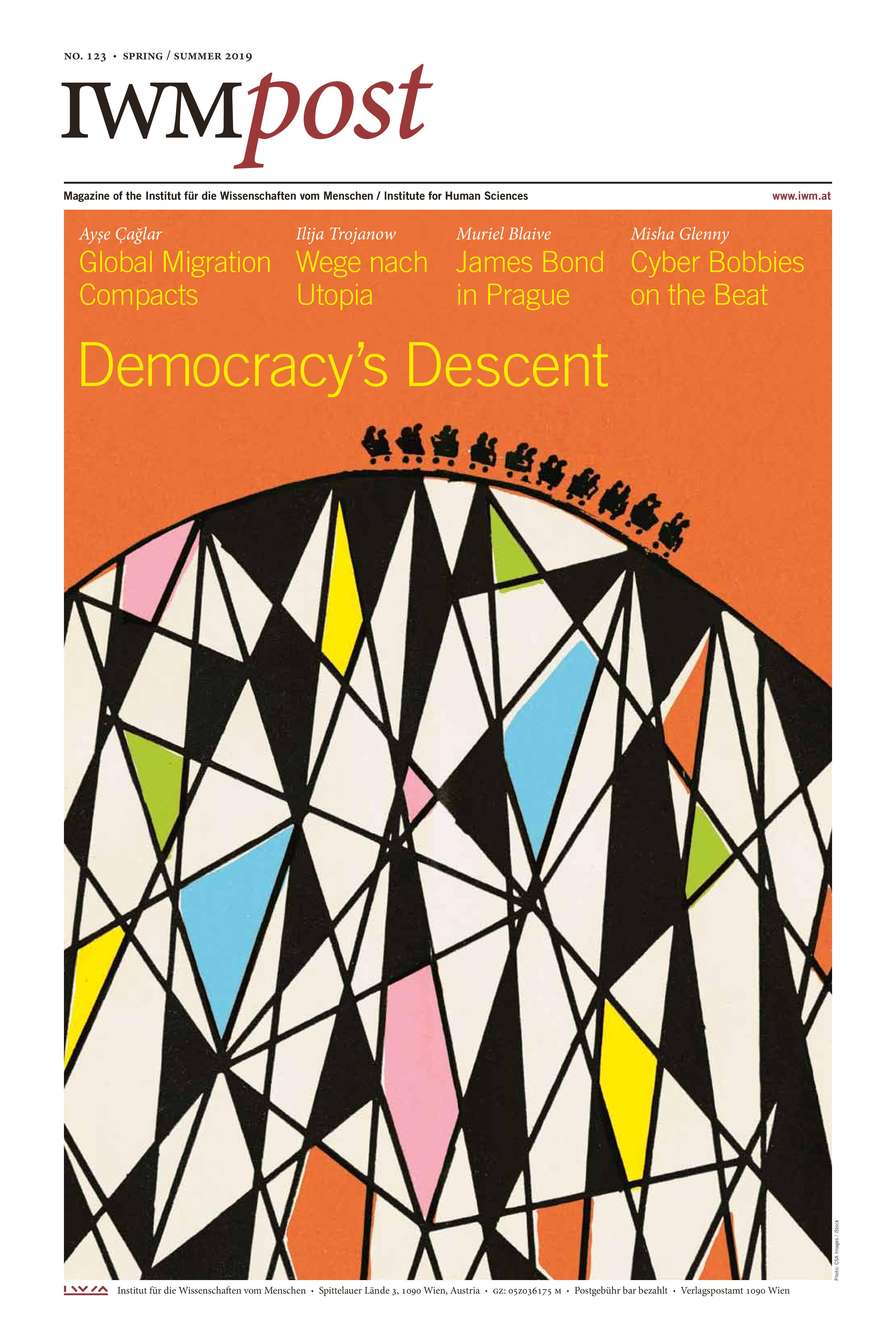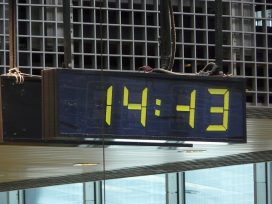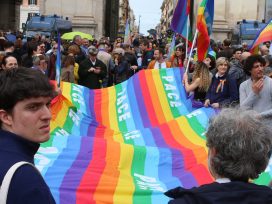The ‘discovery’ of Medieval icons after a 1913 exhibition marks a shift in the Russian avant-garde’s self-image. From now on, the path of western modernism would be abandoned in favour of a distinctively ‘Russian’ art. But in inventing a tradition for themselves, avant-gardists ‘rediscovered’ a sensibility that didn’t need unearthing.
In or about 1913, the Russian avant-garde discovered the icon. The discovery was so momentous, so deeply-felt and life-changing that it can be compared to the effect that the discovery of French postimpressionism had had on British intellectuals a few years earlier, when Virginia Woolf announced that ‘on or about December 1910, human character changed’.1
For the Russians, in many ways, everything changed. The romance with Western modernism was decisively over and there was no going back. In their passionate embrace of the icon, the avant-garde found itself and acquired, for the first time, an enormous sense of confidence. The identity that they constructed for themselves was repeatedly expressed in familiarly Slavophile language, playing on the idea of Russia’s uniqueness, the special place of the Russian people in world history, and the distinctiveness of its art and culture.
The reason that the avant-garde mattered well beyond the history of art is that their discovery of the icon amounted to an ‘invented tradition’, much needed in the ongoing cultural-nationalistic project of late-imperial Russia. As Eric Hobsbawm demonstrated, ‘invented traditions’ ‘are responses to novel situations which take the form of reference to old situations’.2 And it is exactly the thirty or forty years before the First World War that saw what Hobsbawm called ‘the greatest mass generation of traditions’3, which should be understood against the background of the nation, nationalism, and related ideas. In this sense, Russia was not an exception, but part of Europe-wide developments. At the same time, the Russian case was, in fact, highly specific. As an autocratic empire, rather than a nation-state grounded in citizen rights, Russia developed its own brand of cultural nationalism.
It is typical of invented traditions, Hobsbawm observed, that ‘where possible, [they] normally attempt to establish continuity with a suitable historic past’, even though this continuity is ‘largely fictitious’.4 In this sense, what Russian artists tell us about their artistic biographies and how they wanted to present themselves and their work may not be necessarily the same as what their works actually reveal about their place in the history of art. In fact, ‘inventing a tradition’ is very much a conscious process of adapting, transforming, or even distorting and falsifying, material to fit a certain ideology. This is exactly why we do not have to take the Russian avant-garde artists at their word.
The year 1913: the avant-garde’s constructed genealogy
For Virginia Woolf, ‘human character changed’ in December 1910 as a response to an art exhibition. She was referring to the exhibition ‘Manet and the Postimpressionists’, organized by Roger Fry in London. In Russia, 1913 was remembered in the art-world for two icon exhibitions shown as part of the celebrations of the three hundredth anniversary of the Romanov dynasty – one organized by the Moscow Archaeological Society, and the other by the one of the foremost members of the avant-garde, Mikhail Larionov (1881-1964). Referring to the former, Nikolai Punin (1888-1953), one of the most perceptive art theorists at the time, asked the rhetorical question: ‘Can we now count the day and the year of the opening of the Moscow exhibition as the day and the year of our rebirth?’5
Years later, the architect Berthold Lubetkin (1901-1990), an émigré to Britain, gave a lecture on ‘The Origins of Constructivism’ at Cambridge, in which he also referred to the Moscow show of 1913: ‘All of a sudden the sheer splendour of this art [of the icon] burst on us like a revelation summing up the entire course of Russian art’.6
This alleged discovery, which happened almost overnight, at a well-defined moment, is interesting, because the icon did not need ‘discovering’ in any literal sense of the word. Unlike post-impressionism at the beginning of the twentieth century, it had been around for a long time. Besides, it was – and still is – a living form of art.
The study of the medieval image had been going on at least for half a century.7 What was new, however, was not the revived interest in an ancient art form but the completely new role that Russian avant-garde artists themselves assigned to the icon. In this sense, the exhibition, organized by Larionov, was even more significant. Larionov put icons on display – some of them from his personal collection – alongside his own and his partner Natalia Goncharova’s (1881-1962) highly abstract works.
What was ground-breaking was that, for the first time, the connection between medieval images and avant-garde works was made in a public and highly visible space. The message was unmistakeable – the Russian avant-garde, seen up to this moment as a branch of the Western modernist movement, proclaimed loud and clear its belonging to its native artistic tradition of the icon. What matters here is the very public act of advertizing a new genealogy.
The extent to which the young generation of artists, some of whom until only recently had eagerly sought to train in Paris and the West, now rushed to sever their connections with Western art and reclaim the icon is, indeed, extraordinary. In many ways, they were recapitulating the attitude of the equally Western-educated and Europeanized Slavophile philosophers (Khomiakov, Kireevsky, Soloviev, and others), who went out of their way to insist on the utter originality of their philosophy and its fundamental distinction from the Western philosophical tradition, while, at the same time, presenting themselves as the heirs of a unique Eastern Orthodox theological tradition. With all their differences, there is a sense in which the avant-garde followed in the same path.
Constructivist sculptor Naum Gabo (1890-1977) maintained that ‘the whole history of Russian art had a greater influence on our generation than [Cubism, Futurism, etc.] put together’.8 More subtly, many would describe their artistic evolution as an initial acquaintance with Western art, the main value of which was to open their eyes to the great worth of the icon.
Vasily Kandinsky (1866-1944), probably the most internationally successful of the Russian avant-garde, described the impression that an exhibition of French impressionist art in Moscow in 1895 had on him: ‘From that moment on, I looked at the art of icons with different eyes’9. Goncharova, one of the most important women painters at the time, said of herself: ‘At the beginning of my development I learned most of all from my French contemporaries. They stimulated my awareness, and [then] I realised the great significance and value of the art of my own country’10. Interestingly, Goncharova’s perception of her artistic evolution led her to conclude: ‘I am by no means European’.
In 1913, everyone was convinced, along with Punin, that ‘icons, in their magnificence and living beauty, will help contemporary art accomplish achievements which differ from those that have been influencing European art for the last few years’11. In other words, the icon tradition would allow the Russian avant-garde to find its own unique identity. The idea was novel and welcomed, almost euphorically, by the entire generation of avant-garde artists in Russia.
The avant-garde icon
What almost immediately catches one’s attention in the story that came out is what the avant-garde Russian artists and critics meant by ‘icon’. They were certainly not referring to the standard art historical definition of the term, which describes an art form whose roots lie in late antiquity, whence it entered the art of Byzantium and the traditions culturally influenced by it at the time, including in western Europe (such as the Italian maniera greca, for example).
This comprehensive idea of the ‘icon’ is not what the Russians had in mind at all. They were referring, instead, in a limited way, to a rather short period of Russian icon painting, mainly as exemplified by fourteenth- and fifteenth-century iconography, before the advent of Westernizing tendencies in the Russian tradition. The art of Andrei Rublev (1360s – c.1427-30) was the supreme illustration of this tradition. It is in this period that Russian artists and critics at the beginning of the twentieth century found the ideal of an allegedly ‘pure’ Russian artistic tradition.
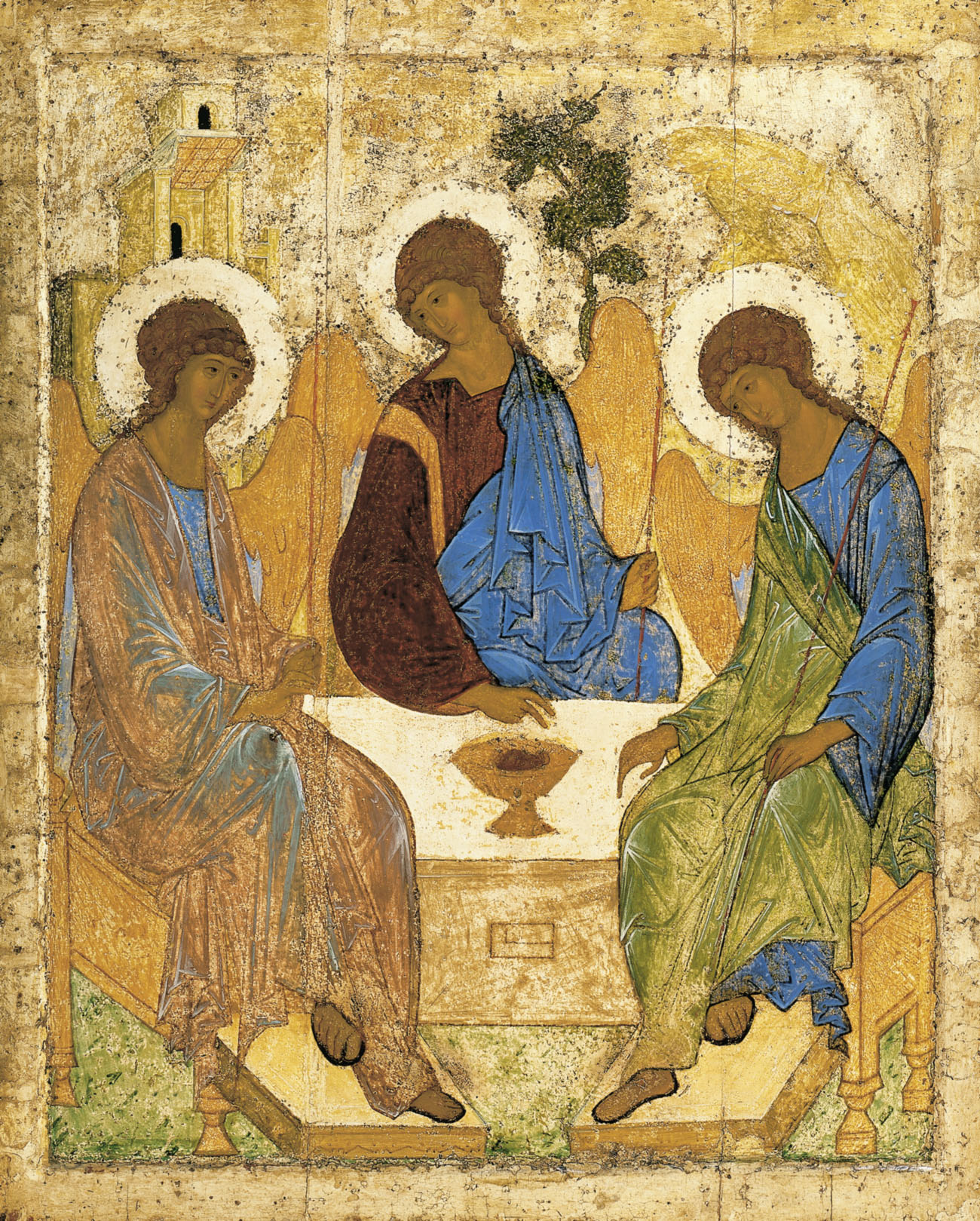
Andrei Rublev, ‘The Trinity’, 1411/25, tempera on panel, Tretyakov Gallery, Moscow. Image from Wikipedia.
More importantly, the icon is a religious image, while many, though not all, of the avant-garde explicitly insisted on the lack of a religious dimension in their work. The understanding of the icon in Eastern Orthodox culture is based on the theology of the image, which evolved during the Iconoclastic Controversy in Byzantium in the eighth and ninth centuries and became part of the doctrine of the Eastern Orthodox Church.
Without going into the intricacies of this theology, one thing is clear – the icon is a religious, cult object and a helpmate in the process of prayer. Further, it is, a ‘container of presence’, i.e., the image of Christ is, in a certain sense defined by Orthodox theology, Christ Himself. In this, it is quite unlike and, indeed, belongs to a different category than, the work of art. Indeed, a religious believer praying before an icon has little in common with Kant’s viewer of an artistic representation, who is ‘indifferent to the real existence of the object of this representation’ and plays ‘the part of judge in matters of taste’.12 Certainly, ‘the real existence’ of the figure depicted in the icon – Christ, the Virgin, etc. – is what is of paramount significance to the religious person.
Now, consider The Corn Cutter (1911) by Kazimir Malevich (1879-1935), a painter said to have been influenced by the art of the icon more than anyone from his generation. The image shows three figures sitting around a table. There are no other objects on the table itself except for the candle (and one of the men’s feet).
The composition is a clear echo of the iconographical type of the Old Testament Trinity, which typically shows three angels sitting around a table and grouped in a similar manner as in Malevich’s work, i.e., a central figure flanked by two other figures. It is highly likely that Malevich had a particular icon in mind, namely the famous image by Rublev, which had been cleaned recently and had attracted enormous attention.
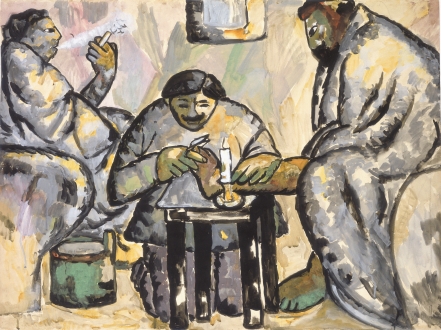
Kazimir Malevich, ‘The Corn Cutter’, 1911, Stedelijk Museum, Amsterdam. Image from Wikipedia.
Malevich’s painting may have been designed with Rublev’s The Trinity in mind, but the subject completely excludes the function of the icon. It is unthinkable that anyone would address prayers to The Corn Cutter. Some of Malevich’s other works, based on abstract geometrical shapes and devoid of any figural elements whatsoever are even more foreign to the world of the icon. They do not depict anything or anyone and certainly do not have the function of representing the deity.
One of the most famous examples, The Black Square, was initially displayed in a corner at the First Suprematist Exhibition in 1915 in St. Petersburg. The arrangement, used by other avant-garde artists as well, brings intentional associations with the Russian tradition of krasnii ugol’ (the red or the beautiful corner), i.e, the corner of a room in which Russians would frequently hang their icons. The image, even in the familiar – in the Russian context – corner position would still leave the average Christian believer bewildered.
The very lack of any figural elements, and especially the face of a holy figure, excludes once and for all the religious function of the icon, at least in the Christian context. This was the intention too, since Malevich was very clear that the religious meaning of the icon had no place in his work and that of his contemporaries. He explicitly maintained that ‘the icon can no longer be the same meaning, goal, and means that it was formerly: … it has already passed into the museum where it can be preserved under the new meaning, not of a religious conception but of art’13. Vladimir Tatlin (1885-1953), never one to mince words, made the point bluntly and uncompromisingly: ‘It is unimportant to a true artist whether to portray a Madonna or a strumpet because he solves his own artistic problems through their creation’14.
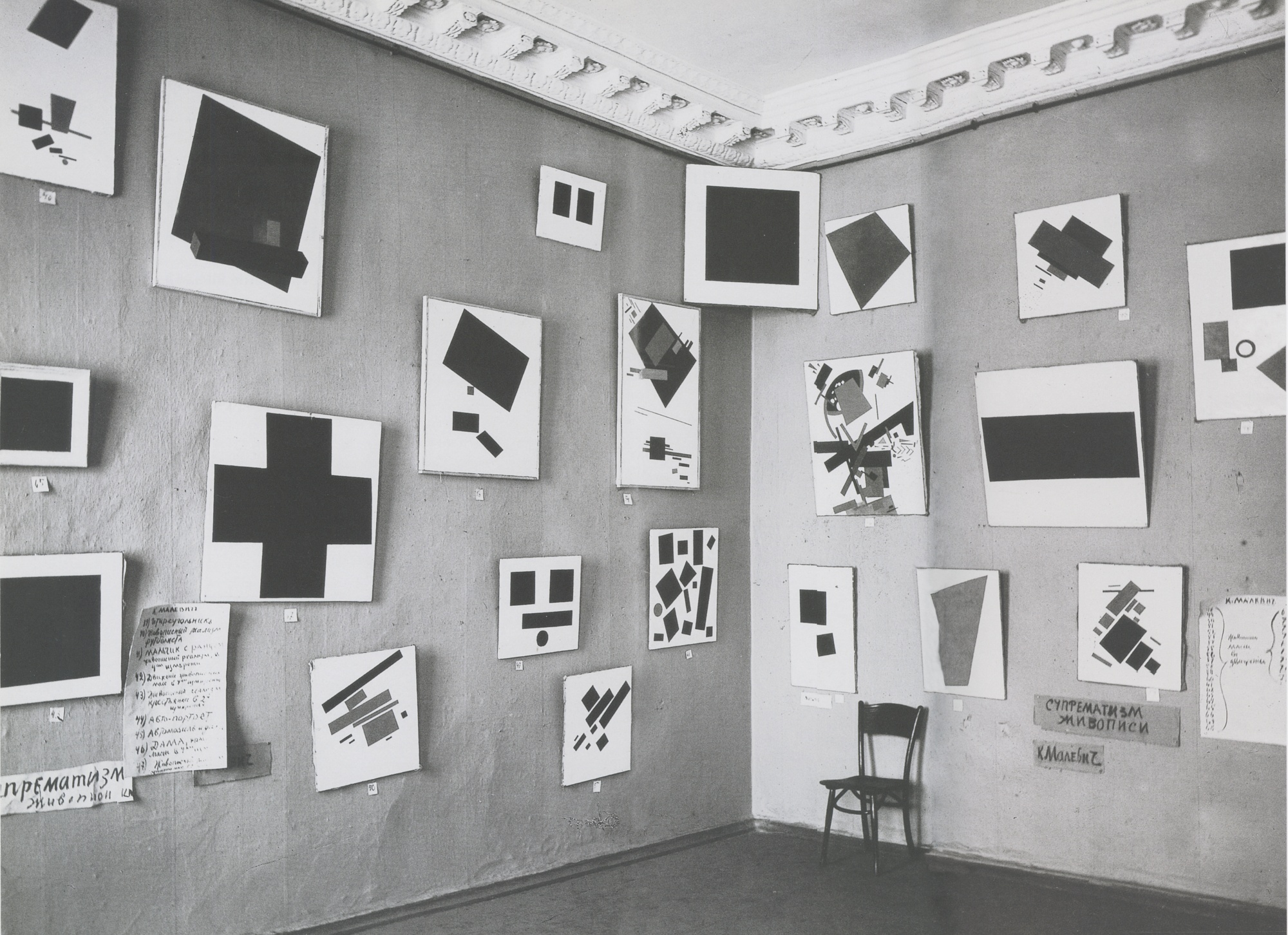
Kazimir Malevich’s works in ‘Last Futurist Exhibition of Paintings, 0, 10’, Dobychina Art Bureau, Marsovo Pole, Petrograd, 1915-16. Image from Wikipedia.
Finally, even the stylistic and artistic continuity between the icon and the avant-garde image may not be as profound as the avant-garde would like us to believe. After all, if we look at any work by a Russian artist of the period, while we may find something typically Russian about it, we know right away that we are in the world of modernism. And it is a modernism broadly defined and initiated by Western avant-garde movements.
Once the Russians turned away from cubism, futurism, etc., as ways of describing their work, they created, in the spirit of their newly-found self-confidence, their own modernist movements such as Malevich’s suprematism and Larionov’s rayonism. As Russian as these movements may be, they are also quintessentially modernist and represent, in fact, some of the greatest and most original creations of the European avant-garde. Neither suprematist nor rayonist works can be correctly described as ‘icons’ in the standard sense of the word. If anything, they are avant-garde icons, reflecting the avant-garde’s eccentric and highly tendentious use of the concept of the icon.
It is worth noticing that while speaking the language of Slavophilism, the avant-garde were frequently charging terms and notions with a completely different meaning. The loss of the religious connotation of the ‘icon’ marks a revealing deviation from the classical Slavophilism of the nineteenth century, which was grounded in a Christian, Eastern Orthodox worldview.
Nikolai Berdyaev (1874-1948), one of the foremost religious philosophers at the time, was fully aware that the original Slavophile project had acquired a new meaning for his contemporaries. ‘The problems raised by the Slavophiles and their religious solution are still relevant to us,’ Berdyeav wrote in 1912, ‘but our generation is very different from the generation of the 1830s and 40s. They were idealists and romanticists […] whereas it has been our fate to become tragic realists’. He continues prophetically, ‘the Slavophiles […] knew nothing of such fears, of this terror, or sense of tragedy; the ground did not tremble under their feet, nor did the earth burst into flames as it did under us’15.
A year after the icon exhibitions in Moscow, the earth did burst out in flames with the beginning of the First World War. In the Russian context, the war was very much a test of the viability of the cultural-nationalistic project with which the avant-garde had affiliated themselves.
This paper is loosely based on a talk I gave at the Morphomata Centre at the University of Cologne on 21 Oct 2019. It is a revision of my piece What Is Russian about the Russian Avant-garde?, IWMPost 123/2018. I thank Marion Gollner and Anita Dick for editing my text for the IWMPost. I am also grateful to two insightful readers – Ivan Krastev and Laura Engelstein.
Virginia Woolf, 'Mr. Bennett and Mrs. Brown', in Collected Essays: Volume 1, London, 1966, 320.
Eric Hobsbawm, The Invention of Tradition, Cambridge, 1983, 2.
Hobsbawm, 263
Ibid, 2.
Nikolai Punin, 'Directions in Contemporary Art and Russian Icon Painting', Apollon, 5/1913, 41-42.
John Allan, Bertold Lubetkin: Architecture and the Tradition of Progress, London, 1992, 24-25.
For the best study on this, see Gerold I. Vzdornov, The History of the Discovery and Study of Russian Medieval Painting, 2017, originally in Russian in 1986.
Naum Gabo, Gabo on Gabo: Texts and Interviews, eds. C. Lodder and M. Hammer, Forest Row, 2000, 165.
Cited in Annette Vezin and Luc Vezin, Kandinsky and der Blaue Reiter, Paris, 1992, 37.
Cited in M.N. Yablonskaya, Women Artists of Russia’s New Age, London, 1990, 63
Nikolai Punin, 'Directions in Contemporary Art and Russian Icon Painting' [in Russian], Apollon 5/1913, 41-42.
Immanuel Kant, The Critique of Judgement, trans. J.C. Meredith, Oxford, 1911, 43.
Kazimir Malevich, 'The Question of Imitative Art' in Andersen, T., (ed.), K. S. Malevich: Essays on Art, 1915-1933, trans. X. Glowacki-Prus and A. McMillin, New York, 1971, 170.
Cited in Larissa Zhadova, Tatlin, New York, 1988, 56
Nikolai Berdyaev, A.S. Khomyakov, Moscow, 1912, 28.
Published 5 November 2019
Original in English
First published by Eurozine
Contributed by Clemena Antonova © Clemena Antonova / Institute of Human Sciences / Eurozine
PDF/PRINTIn collaboration with
In focal points
Newsletter
Subscribe to know what’s worth thinking about.
Related Articles
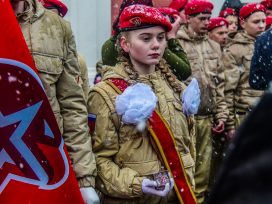
Intellectual violence
The militarization of education in Russia
Education has become another battleground in the Kremlin’s campaign to militarize the Russian public consciousness. Youth organizations, book bans, changes to school curricula – all amount to a ‘special anthropological operation’.

Russian drones entering Polish airspace, militarily seen as intensified provocation rather than open warfare, have nevertheless provoked costly responses – both from NATO’s air defence systems and civilian reactions to disinformation. A war correspondent’s view of what can be done technologically – for greater military efficiency and improved civil defence.
